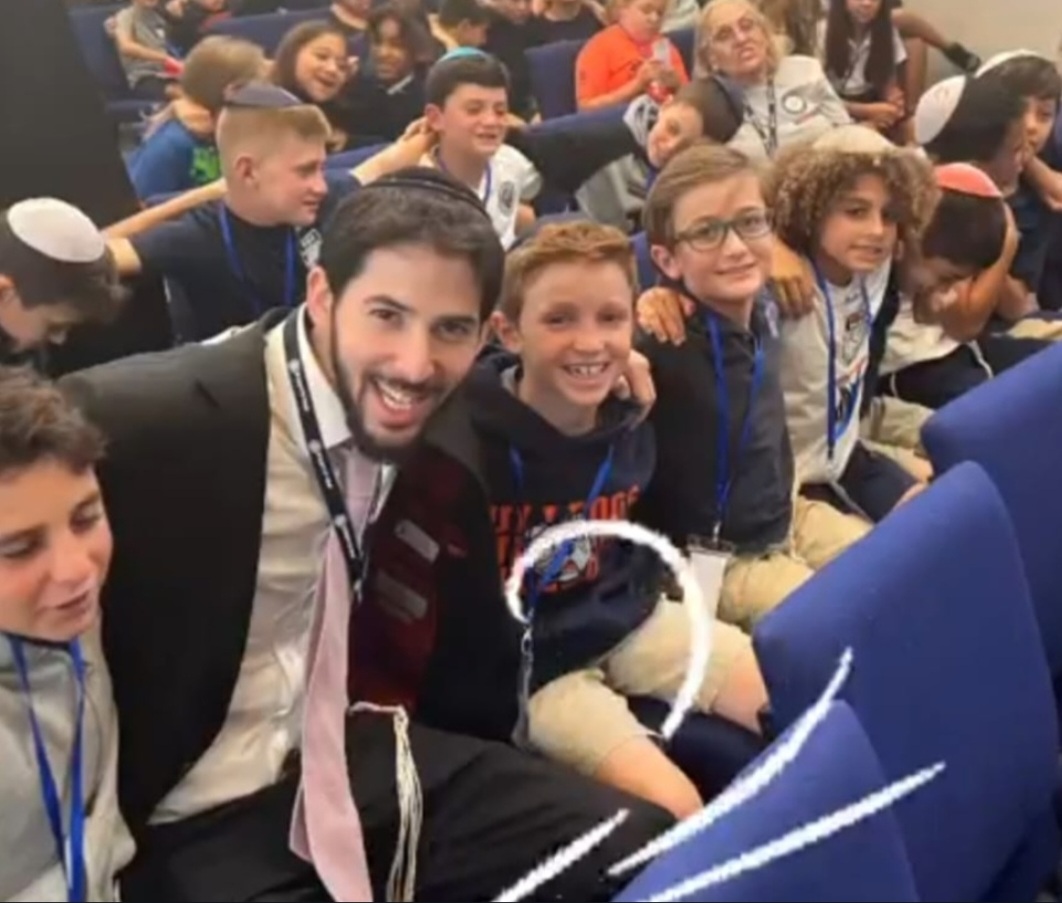פַּרָשַׁת תְּצַוֶה
Am I a Fan or a Player?
Rabbi Eisenberg, 4th Grade Rebbi
Tetzaveh, the Parsha of the בִּגְדֵי כְּהוּנָה (Clothing of Priesthood), is often associated with dress codes, fashion, and the question of whether or not the clothing make the man.
Of course, there is an appropriate way to dress for each activity in which we participate. Yes, the way we dress is a statement about our sense of fashion. And there is no doubt, clothing can reveal a lot about a person, and our personalities and attitudes are often influenced by the way we choose to dress. But, I don’t want to talk about that.
So, let’s talk about sports instead. The Super Bowl is still on a lot of our minds. Yes, each player comes to the game dressed in his team colors. Even many of the fans arrive wearing their favorite player’s jerseys.
But, the football players on the field wear a lot of other uncomfortable, clunky articles of clothing. But, could you imagine, for a moment, a football player leaving home his shoulder pads because they make him feel itchy and sweaty? What if that same player didn’t bring his helmet because it gives him awkward helmet hair? And what if he left his entire uniform home because he just decided that he really didn’t like the color?
Would we respect his decision as a fashion choice and a question of personal comfort? Or might we recommend he stay off the football field? Maybe, that’s not fair. Why does he have to wear this heavy suit of armor while the spectators in the crowd get to wear basically whatever they want? What is the difference between the football fan and the football player?
The difference is between the words “fan” and “player.” The fan is just a spectator. The fan watches the game from the bleachers. The fan might be cheering or booing. Maybe he too is wearing the team colors. Maybe he is just wearing a T-shirt and sweatpants. And maybe, he is wearing a suit and tie. It doesn’t matter what he wears though, because he is just a fan.
The player, however, is in the game. His clothes are not just a fashion choice. They are his protective gear. Each pad and every layer on his body has an important purpose. If he can’t handle the uniform, football might not be for him. Because no football player would ever think to not wear his entire uniform. It’s not a question of freedom, but a question of safety. If a player were to enter the arena without the proper gear, he could die.
And yet, even if there was no danger involved, a real football player will wear his uniform proudly because, for him, it is not just a game. It is part of his identity. It is his life.
Of course, לְהַבְדִיל, the כֹּהֵן גָדוֹל (High Priest) wore his own team uniform, protective shoulder pads, and helmet. Twelve team colors can be found on the stones of his חֹשֶׁן (breastplate) which had the names of the שִׁבְטֵי יִשְׂרָאֵל (tribes of Israel) on them. He plays for team Yisrael. They must be in his heart when he is “competing” in the holiest arena.
But, that’s not enough. He wears two אַבְנֵי שֹׁהַם (onyx stones), these large stone shoulder pads which also have the names of each tribe engraved on them. This way, he remembers to have עַם יִשְׂרָאֵל not just on his heart, but that he carries them shoulders and takes responsibility for them when he enters Hashem’s stadium. The צִיץ (diadem) on his head read “קֹדֶשׁ לַה׳” (“Holy to Hashem”) reminding him that he is not just playing for Team עַם יִשְׂרָאֵל, but he is also on Team Hashem.
And what if the כֹּהֵן were to decide one day to perform his עַבוֹדָה (service) without his uniform because it was uncomfortable or just not his color? What if a חַיָל (soldier) in צַהַ״ל (IDF) decided to leave home his helmet and gun because they were heavy and made him feel hot? Why can’t the כֹּהַנִים and חַיָלִים just wear comfortable T-shirts that read “עַם יִשְׂרָאֵל חַי” on one side and “I love Hashem” on the other? Why can’t they choose what to wear? Because they are not just fans of the game. Each one is a player in the game. Each one is not just a fan of עַם יִשְׂרָאֵל or a fan of Hashem. Each one is in the game playing for team עַם יִשְׂרָאֵל and team Hashem. It’s not a question of freedom, but a question of safety. If a player were to enter the arena without the proper gear, he could die.
And yet, even if there was no danger involved, a real כֹּהֵן, a real soldier, will wear his uniform proudly because, for him, it is not just a game. It is part of his identity. It is his life.
Theoretically, we can wear what we want. But, that’s only if we’re just fans, mere spectators of the Jewish people, fans who cheer for Hashem. And maybe, if we really have עַם יִשְׂרָאֵל on our hearts, we will wear on our bodies a reminder of our hostages and soldiers (Hashem should bring them all home safely and soon).
But, if we are players in the game, players for עַם יִשְׂרָאֵל and for Hashem, we have to wear all of our protective gear. The gear may slightly vary between the players, but we are no strangers to the fact that the Jewish people certainly have their protective helmets, body armor, and team colors. We represent Hashem’s people and His Torah. If indeed, we choose to not just be fans, but players, we will be sure and proud to be dressed appropriately for the game.
We should merit to be the most valuable players in the game and win it with the coming of Moshiach, Bimheirah Biyomeinu!
Have a wonderful שַׁבָּת

